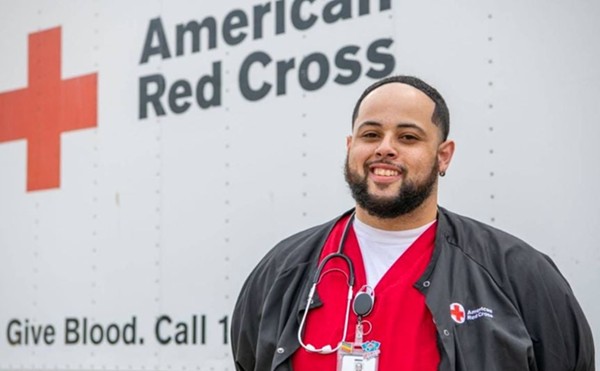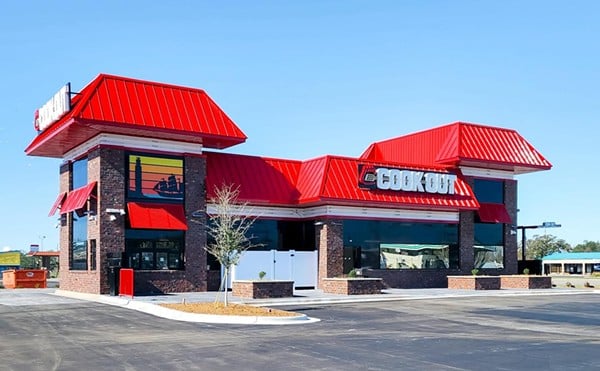My friend and fellow bicycle advocate Jackie Green makes good sense sometimes. Unfortunately, he also sometimes shreds logic in service of far-fetched ideas. He delivers his message with the conviction and sense of righteousness of a preacher. Alas, this time he leads his flock astray.
In his guest commentary (“Bicycling safety and the law,” LEO, Aug. 19), Jackie offers seductive but baseless arguments that bicyclists would do better to ignore stop signs and traffic signals and to ride unpredictably. This advice violates the law, the collective experience of the bicycling community, and the lessons of crash statistics.
As a non-lawyer, I will not argue Jackie’s fanciful interpretation of the Metro traffic ordinance releasing bicyclists of the obligation to follow traffic ordinances that “by their very nature can have no application” to bicycles. I doubt that any court of law would rule that stop signs and traffic signals could have no application to bicycles. “Bicycling and the Law” (2008), by attorney Bob Mionske, makes clear that traffic laws throughout the U.S. (except in Idaho) require bicyclists to stop at stop signs and red lights. Mionske reaches this conclusion in spite of citing language in the Uniform Vehicle Code — very similar to the Louisville ordinance — on which Jackie rests his revisionist views. In other words, the leading national expert on bicycles and traffic law (himself an avid bicyclist) accepts that laws pertaining to stop signs and red lights apply to bicyclists.
Kentucky’s traffic laws require bicyclists to obey traffic controls including stop signs and red lights. KRS 189.330 (4) states that every vehicle approaching a stop sign must stop, except when directed by a police officer to proceed. A 1943 Kentucky legal precedent established that a bicycle is a “vehicle” within the meaning of this law. KRS 189.338 (3) spells out the duty of all vehicle operators (including bicyclists) to stop at red lights. Even if Louisville Metro ordinances excused bicyclists from stopping at stop signs and red lights, these state laws would still apply.
A bicyclist swayed by Jackie’s argument might still violate those laws in hopes of better safety. Wrong. Bicycle crash statistics demolish the “don’t stop for safety” rationale. From 2004-2008 in Louisville/Jefferson County, about 650 bicycle crashes with motor vehicles resulted in injuries requiring medical attention. As Jackie correctly stated, most (58 percent) took place at intersections. His two great fears, though, appear wildly overstated. Car-hits-car-hits-stopped-bike crashes accounted for perhaps six of the bicyclist injuries, or fewer than 1 percent. Motor vehicles rear-ending stopped bicyclists accounted for five of the bicyclist injuries, again less than 1 percent. Eleven injury crashes (with no fatalities) over a five-year period hardly constitutes an epidemic requiring the “cure” of breaking traffic laws. Indeed, running red lights and stop signs, even “cautiously,” exposes bicyclists to much greater risk than stopping legally.
The air pollution concern, too, is misguided. Studies have shown that motor vehicles concentrate air pollution in their interiors, exposing their users to higher levels of pollutants (including the carcinogens) than bicyclists and pedestrians experience on the same roads. Bicycling significantly reduces bicyclists’ lifetime risks of colon cancer, breast cancer and many other diseases. Even in urban areas with heavy traffic, the health benefits of bicycling vastly outweigh the health risks.
Jackie’s advice to ride unpredictably violates common sense and common courtesy. Scaring drivers with sudden, unpredictable actions puts them into fight-or-flight mode, which is not likely to lead to careful, rational driving. Erratic riding antagonizes drivers. Besides, I have more important concerns when bicycling in traffic than figuring out how to startle the motorist behind me without getting into a crash in so doing.
Jackie suggests, remarkably, that bicyclists bear essentially no blame for car-bike crashes. Year after year, crash reports show that over half of local injury car-bike crashes involve bicyclist errors. Jackie recommends two of the most dangerous behaviors, wrong-way riding and sidewalk riding. Study after study shows that both put bicyclists where motorists do not expect them, more than doubling the rate of crashes. Further, wrong-way bicyclists endanger law-abiding bicyclists, and sidewalk bicyclists endanger pedestrians.
Let’s end the cars-versus-bikes rhetoric and work together to make the roads safer for all of us. We can progress only through cooperation. Bicyclists who make up their own rules undermine safety, respect for bicyclists and chances for progress toward safer and better bicycling.
Barry Zalph is executive director of Bicycling for Louisville. For references, contact him at [email protected].





